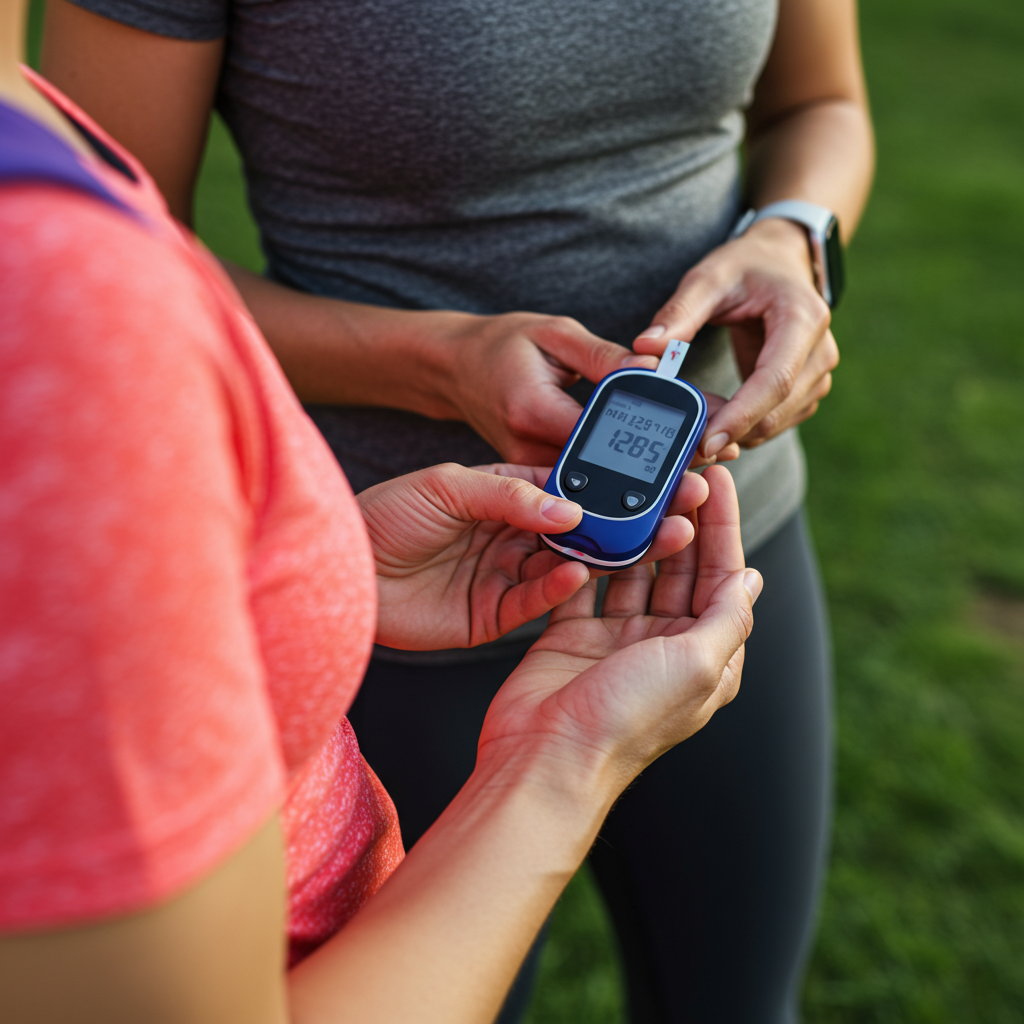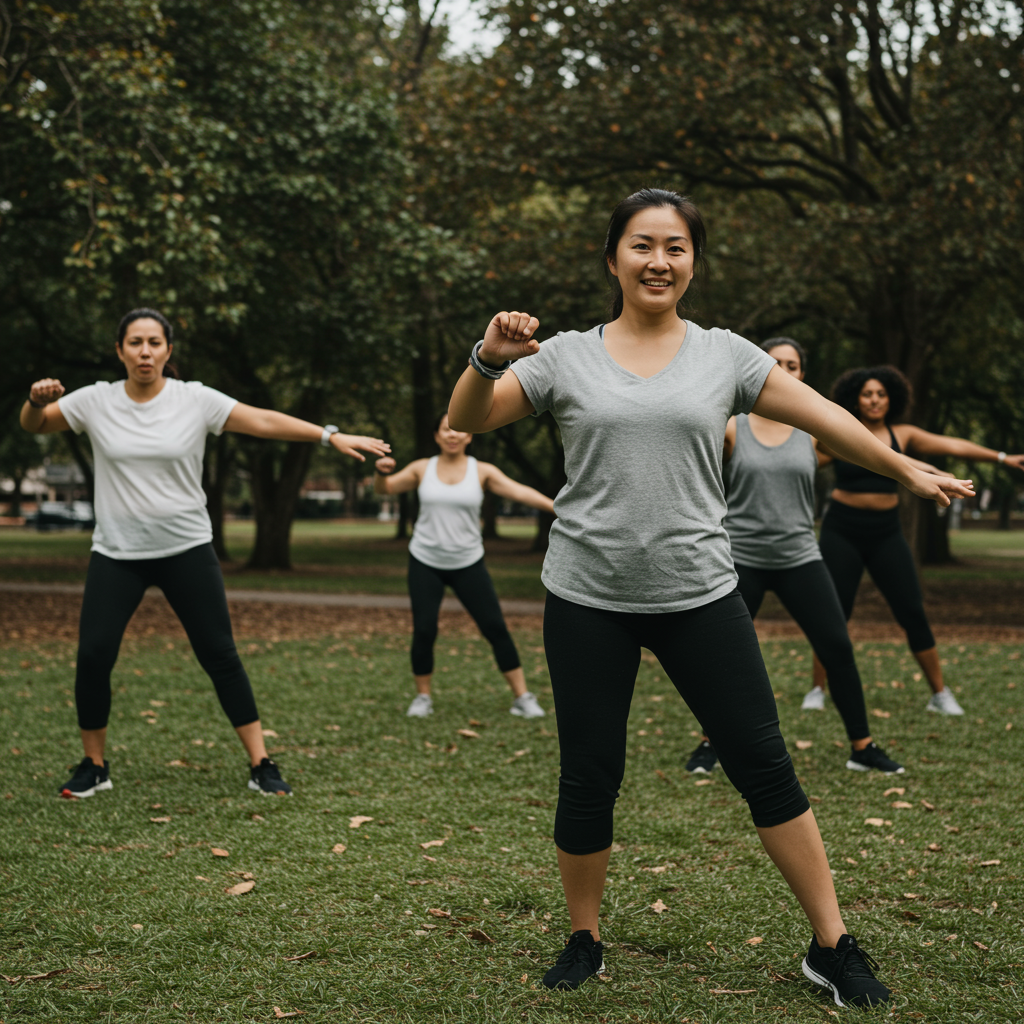Moving for Stability: How Exercise Becomes Your Ally in Blood Sugar Management
If you're living with diabetes or concerned about your blood sugar levels, you've likely heard that exercise is beneficial. But exactly how does physical activity help tame those glucose fluctuations? Let's break down the science behind why movement matters and explore practical ways to incorporate exercise into your blood sugar management strategy.
The Blood Sugar Balancing Act
Our bodies are constantly working to maintain blood glucose within a narrow range. For people with diabetes, this natural regulatory system doesn't function optimally, leading to potentially dangerous highs and lows. Exercise enters this equation as a powerful modulator, helping to restore balance through several mechanisms.

Immediate Effects: How Exercise Lowers Blood Sugar
When you start moving your body, several beneficial processes kick in:
1. Increased Insulin Sensitivity
Exercise makes your muscle cells more responsive to insulin, the hormone responsible for allowing glucose to enter cells. This means:
- Less insulin is needed to move the same amount of glucose
- Your body can utilize insulin more efficiently
- Cells can absorb glucose more readily
This improved sensitivity can last for 24-48 hours after a workout, creating a window of better blood sugar control.
2. Muscle Contraction Activates Glucose Transport
Here's something fascinating: your muscles can take up glucose even without insulin when they're contracting during exercise. This happens through:
- Activation of GLUT4 transporters that move to the cell surface
- Opening alternative pathways for glucose to enter cells
- Creating a "glucose sink" as working muscles consume energy
This is why exercise can lower blood sugar even in people with insulin resistance or type 1 diabetes.
3. Hepatic Glucose Production Changes
Your liver typically releases stored glucose (glycogen) to maintain blood sugar levels. During exercise:
- Initially, the liver may increase glucose output to fuel muscles
- With regular exercise, the liver becomes better regulated
- Overall liver glucose production often decreases, helping stabilize blood sugar
Long-Term Benefits: Building Better Blood Sugar Management
Consistent physical activity creates lasting improvements beyond the immediate effects:
Reduced Inflammation
Chronic inflammation plays a role in insulin resistance. Regular exercise:
- Decreases inflammatory markers in the bloodstream
- Reduces oxidative stress
- Creates an anti-inflammatory environment in tissues
Body Composition Improvements
Exercise, particularly strength training, helps:
- Increase muscle mass, which is more metabolically active
- Reduce visceral fat (the dangerous fat around organs)
- Improve the muscle-to-fat ratio, enhancing overall metabolism
Stress Reduction
Physical activity is a proven stress reliever, which matters because:
- Stress hormones like cortisol can raise blood sugar
- High stress can lead to poor food choices and sleep issues
- Mind-body exercises like yoga combine movement with stress management
Finding Your Exercise Sweet Spot
Not all exercise affects blood sugar the same way. Here's how to customize your approach:
Aerobic vs. Resistance Training
Aerobic exercise (walking, swimming, cycling):
- Generally lowers blood sugar during and after activity
- Improves cardiovascular health alongside glucose control
- Often easier to start with for beginners
Resistance training (weights, resistance bands, bodyweight exercises):
- Builds muscle mass that improves long-term insulin sensitivity
- May temporarily raise blood sugar during intense sessions
- Continues to improve metabolism for hours after the workout
The ideal approach? A combination of both types for maximum benefit.

Intensity Matters
- Moderate exercise typically lowers blood sugar consistently
- High-intensity workouts may temporarily raise blood sugar due to the release of stress hormones
- Low-intensity movement like walking after meals can blunt post-meal glucose spikes
Timing Your Workouts
Strategic timing can optimize blood sugar management:
- Morning workouts may help set up better glucose control throughout the day
- Post-meal exercise (even just a 10-minute walk) can significantly reduce meal-related spikes
- Spreading activity throughout the day might be more effective than one longer session
Safety First: Exercising with Diabetes
While exercise is beneficial, some precautions are necessary:
Monitor Blood Sugar
- Check levels before, potentially during, and after exercise
- Be aware that effects can continue for hours after you finish
- Learn your body's typical responses to different activities
Watch for Hypoglycemia
- Have fast-acting carbs available during exercise
- Be especially cautious if taking insulin or certain medications
- Remember that increased sensitivity can last for hours after exercise
Start Gradually
- Begin with short, manageable sessions
- Increase duration and intensity slowly
- Consider working with a fitness professional familiar with diabetes

Making Movement Sustainable
The best exercise plan is one you'll actually follow. Consider these approaches:
- Find joy in movement: Choose activities you genuinely enjoy
- Set realistic goals: Small, consistent efforts often yield better results than ambitious plans
- Track progress beyond numbers: Notice improvements in energy, mood, and overall well-being
- Build a support system: Exercise partners or communities can provide motivation
The Bottom Line
Exercise is not just a recommended add-on to diabetes management—it's a powerful physiological tool that directly impacts how your body processes glucose. By understanding how different types of movement affect your blood sugar, you can use exercise strategically to improve both day-to-day stability and long-term health outcomes.
Remember that any movement is better than none. Whether it's a structured workout or simply taking the stairs instead of the elevator, each active choice you make contributes to better blood sugar control.
References:
Colberg, S. R., Sigal, R. J., Yardley, J. E., Riddell, M. C., Dunstan, D. W., Dempsey, P. C., Horton, E. S., Castorino, K., & Tate, D. F. (2016). Physical Activity/Exercise and Diabetes: A Position Statement of the American Diabetes Association. Diabetes Care, 39(11), 2065–2079. https://doi.org/10.2337/dc16-1728
Way, K. L., Hackett, D. A., Baker, M. K., & Johnson, N. A. (2016). The Effect of Regular Exercise on Insulin Sensitivity in Type 2 Diabetes Mellitus: A Systematic Review and Meta-Analysis. Diabetes & Metabolism Journal, 40(4), 253–271. https://doi.org/10.4093/dmj.2016.40.4.253






